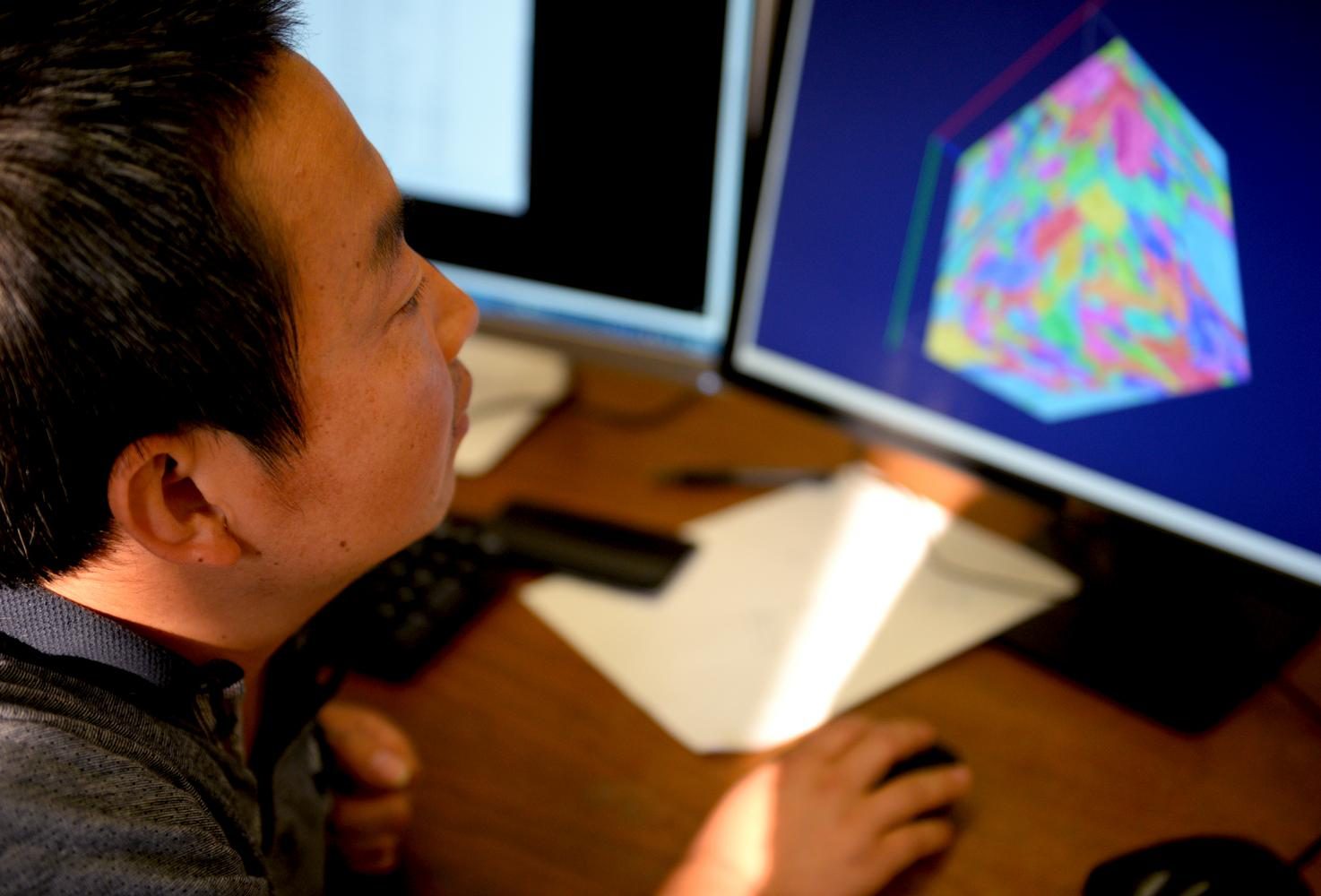WSU researchers develop cutting edge brain-mapping algorithm
Source: CODY COTTIER
 It took 10 years to map the worm’s brain, it would likely take another 10 for the mouse. The human brain is still a long shot, but getting shorter with the help of an algorithm developed by WSU researchers.
It took 10 years to map the worm’s brain, it would likely take another 10 for the mouse. The human brain is still a long shot, but getting shorter with the help of an algorithm developed by WSU researchers.
Their work, which is bringing computers closer to human accuracy in analyzing images of the brain, will help scientists to better study and understand its structure and how it works.
Tao Zeng, a doctoral student working on the project, said that with current methods, brain mapping is a slow process. It involves manually outlining the connections between each neuron and thousands of others, and the average brain has about 100 billion of these cells.
“For each neuron, it’s very simple,” Zeng said. “But when they combine together it forms the functionality of the brain.”
And the brain, lead researcher Shuiwang Ji said, is the most complex piece of matter in the universe. Despite this, scientists know relatively little about it, he said.
For example, although doctors are able to treat most human illnesses, cures for brain diseases are elusive. Without a more sophisticated understanding of brain circuitry, they are unable to deal with diseases like Alzheimer’s, Parkinson’s, autism and schizophrenia.
“We think the brain is the most fundamentally important human system to study,” Ji said.
The end goal is to map every neuron. To demonstrate the importance of a strong understanding of the brain, Zeng compared it to a car, with a variety of parts contributing to the functioning whole. Without knowing how each of those parts work and interact with each other, a full picture of the car is impossible.
But this is no simple task for a car, let alone for the peak of material complexity. The process begins with a tiny section of the brain. Because of the immense size of the data, they can be no larger than about 1,000 neurons at once, Ji said. Researchers use electron microscopes to create images of these neurons.
The algorithm they’ve created, an artificial neural network, is modeled to simulate the way the brain recognizes things. It analyzes the images, and Zeng said it grows more accurate as they input data to tell the computer what neurons look like, and “penalize” it for errors.
There is no perfect metric for measuring the accuracy of humans and computers in brain mapping, Ji said, but judging by the standard metric, the algorithm is almost as good.
The result is a labeled map that distinguishes neurons, shown in different colors. Eventually the algorithm could be able to recognize every neuron. Humans can only analyze very small sections at a time, Zeng said, and the algorithm will help to accelerate the process.
However, Ji added that even at much higher speeds, like 10,000 neurons per second, it would take many years to map all 100 billion.
One problem the field faces is low interest, Ji said. Though he and Zeng are passionate about this kind of fundamental research, he said most computer scientists choose to take a high-paying job with companies like Google instead.
“Unfortunately,” he said, “not many people are interested in moving science forward.”
Zeng compared the quest to map the entire brain to the Human Genome Project of the 1990s and early 2000s. During this time, an international team of scientists worked to map all of human DNA.
But the logistics of mapping the brain are far more challenging, Ji said. Another problem is lack of cohesion. Many researchers are working on similar things, but he said they are not moving toward their common goal as a community.
“Everybody is doing their own job,” Ji said. “There is no concerted effort.”
Still, there are people on the task. The Allen Institute for Brain Science, funded by Microsoft co-founder Paul Allen, has about 150 employees.
Researchers have already mapped the brain of a worm that has just 302 neurons. Ji recalled talking to a researcher who told him he could probably map a mouse brain, with about 75 million neurons, in five to 10 years.
Once they hit that milestone, Ji said, “it’s not that far to the human brain.”
Even if researchers could map the entire brain now, they would have nowhere to store it. Ji said the data involved in just the cortex, the outer surface of the brain, would require about 1,000 exabytes — roughly the total amount of storage currently available in the world.
But computers are advancing rapidly; today’s terabytes are yesterday’s megabytes, and tomorrow’s exabytes. Ji said storage space will continue to grow, and alongside it their algorithm’s brain-mapping abilities.
“You cannot imagine,” he said, “what a computer will look like in 10 years.”
| }
|